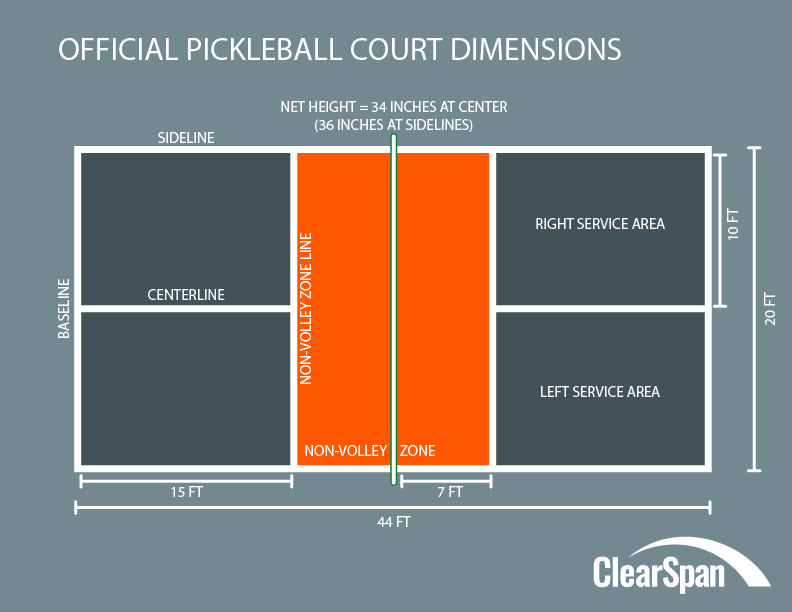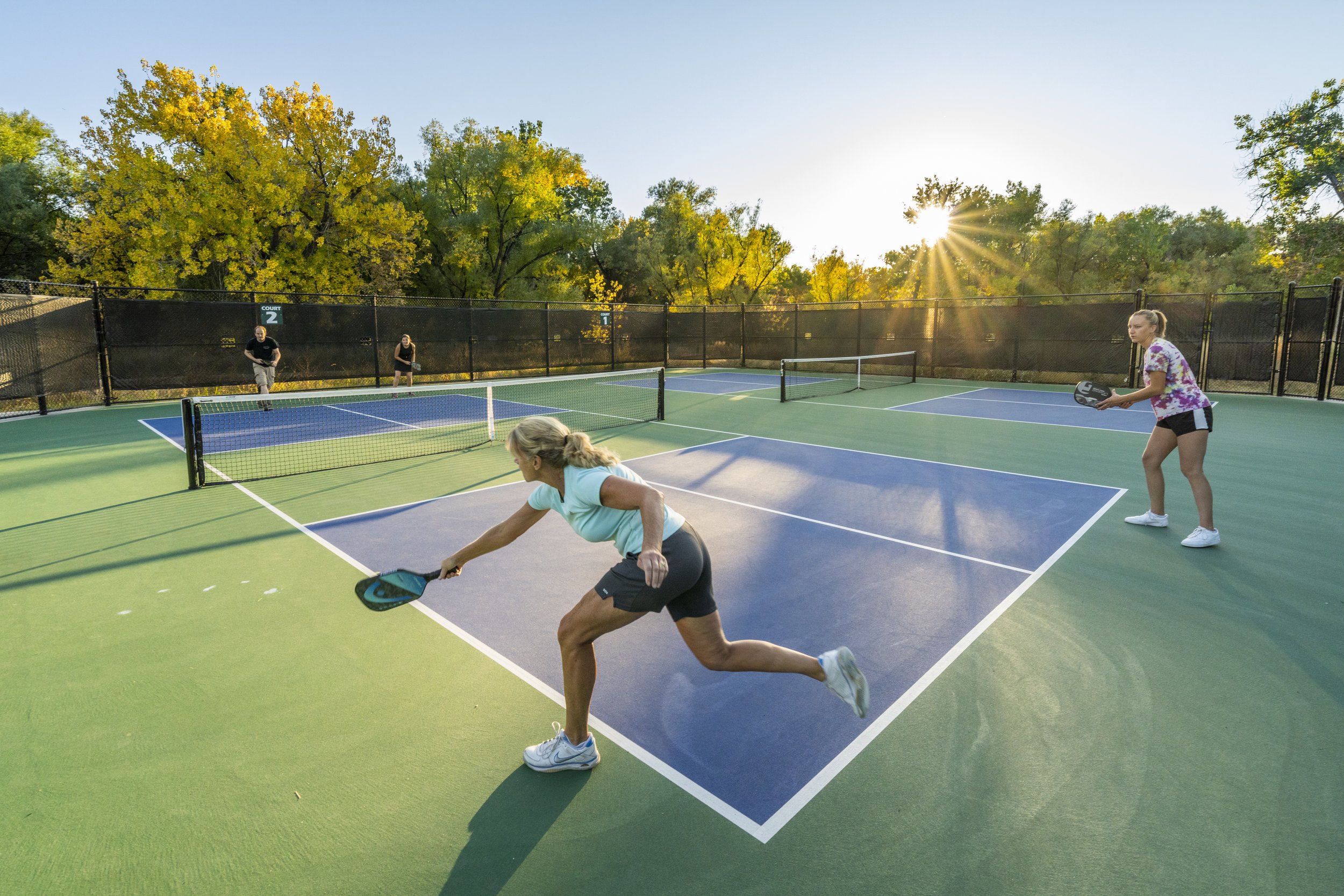Just How Illinois and Midwest are Blazing A Trail in Pickleball Courts Layout & Building
Just How Illinois and Midwest are Blazing A Trail in Pickleball Courts Layout & Building
Blog Article
Key Variables in the Building of Pickleball Judiciaries: From Site Selection to Last Finishes
The building of pickleball courts incorporates an array of crucial elements, starting with the choice of an ideal website that stabilizes accessibility with environmental considerations. Vital aspects such as court measurements, surface area products, and drain systems considerably affect not only the high quality of play yet also the durability of the facility.
Site Selection Criteria
When beginning on the construction of pickleball courts, it is important to pin down the site option criteria that will certainly make sure ideal playability and availability. The area should be conveniently obtainable for gamers, ideally situated near domestic areas or area facilities, to motivate involvement.
Furthermore, the terrain should be degree and steady, as unequal ground can lead to safety threats and impact gameplay. Sufficient drainage is additionally essential; choosing a site with excellent water drainage will help keep court conditions throughout negative weather condition.
Another essential factor to consider is the availability of energies. Access to electricity and water is essential for illumination and maintenance functions. Additionally, closeness to parking centers is important, promoting simple access for gamers and viewers alike.
Environmental factors can not be ignored; natural color from trees can enhance player convenience, while exposure to dominating winds may interrupt play. Lastly, zoning guidelines and community support need to be thought about to make certain that the project straightens with local guidelines and obtains the backing it needs for effective implementation. By carefully assessing these requirements, stakeholders can develop an inviting and practical atmosphere for pickleball fanatics.
Court Capacities and Layout
To guarantee optimum gameplay and adherence to laws, the dimensions and layout of pickleball courts should be very carefully specified. A basic pickleball court determines 20 feet in width and 44 feet in size for both songs and increases play. The advised format includes a non-volley zone, commonly referred to as the "kitchen," prolonging 7 feet from the internet on either side. This location is vital, as it affects gamer positioning and shot option - Illinois and midwest.
The net height is evaluated 36 inches at the sidelines and 34 inches at the facility, developing a mild dip that influences round trajectory. Court markings are just as crucial; lines must be 2 inches broad and unique in shade to make sure exposure.
Additionally, a buffer area bordering the court is a good idea, normally prolonging 5 to 10 feet beyond the sidelines and baselines to suit gamers' movements and enhance safety and security. Correct design and dimensions not just make sure compliance with main guidelines however also boost the general playing experience, suiting both leisure and competitive play. Mindful preparation in these areas is extremely important to the successful construction of pickleball courts.
Surface Area Material Options
Picking the ideal surface product for pickleball courts is essential for ensuring optimum player efficiency and safety. The selection of surface can significantly impact gameplay, including round bounce, traction, and gamer comfort.
There are a number of options offered, each click over here with its distinct attributes. Asphalt is a popular option due to its toughness and low upkeep requirements. It offers a strong playing surface area that can withstand different climate condition yet may need periodic resurfacing.
Concrete is one more extensively used material, supplying outstanding long life and a smooth coating. It allows for constant round bounce but can be tough on players' joints, making it less preferable for lasting play without proper cushioning.
For those looking for boosted convenience and shock absorption, cushioned acrylic surfaces provide a sensible alternative. These surfaces integrate a base layer with an acrylic topcoat, supplying boosted traction and a softer feel, which is useful for minimizing the threat of injuries.
Last but not least, synthetic turf is acquiring traction, especially for multi-purpose centers. Its convenience and reduced upkeep needs make it an attractive Going Here option, though it may not offer the exact same sphere action as typical tough courts. Mindful factor to consider of these options will certainly make sure an optimal playing setting.
Drainage and Illumination Considerations
Appropriate drainage and efficient illumination are necessary elements in the building and construction of pickleball courts, considerably influencing both playability and safety. Sufficient drainage systems prevent water accumulation, which can bring about unsafe surface areas and damage to the court structure. A properly designed drainage strategy includes sloped surface areas and suitable materials to facilitate water move far from the playing area - Illinois and midwest. This not just maintains the stability of the court but additionally decreases downtime because of poor climate condition.
Lighting is just as crucial, specifically for courts intended for evening usage. Correct illumination improves presence, guaranteeing that gamers can see the round clearly and minimizing the threat of accidents. The placement of illumination components should be tactically intended to remove shadows and supply even circulation of light throughout the court. LED lights are recommended for their energy effectiveness and long life, offering bright illumination while minimizing functional prices.

Final Finishes and Maintenance
After attending to drain and illumination factors to consider, interest turns to the final surfaces and ongoing maintenance of pickleball courts. Illinois and midwest. The choice of surface material is crucial, as it impacts both playability and resilience. Common options include acrylic coatings and specialized sports surface areas that give optimum grip and cushioning. These finishes should be applied in numerous layers to make certain strength against weather elements and put on.

Seasonal maintenance may consist of resurfacing every few years, relying like this on usage and environmental variables. Properly preserving webs, court lines, and surrounding areas is just as important to supply a secure and pleasurable having fun experience. By spending in quality surfaces and sticking to an organized maintenance schedule, facility proprietors can guarantee their pickleball courts remain in outstanding condition for several years ahead.
Conclusion
Finally, the effective building and construction of pickleball courts hinges on precise interest to numerous vital factors. Site choice must focus on access and surface security, while court dimensions and layout should comply with ideal requirements for gameplay. The option of surface area product dramatically affects gamer safety and security and efficiency. Reliable water drainage and ample lights add to court durability and exposure. Top quality coatings and a durable maintenance schedule are essential for maintaining the court's problem, improving the overall experience for gamers and viewers alike.
Report this page